Transcription of 7.0 EROSION AND SEDIMENT CONTROL METHODS 7.1 …
1 SECTION 7 - EROSION AND SEDIMENT CONTROL METHODSJune AND SEDIMENT CONTROL is important to recognize the difference between EROSION CONTROL measures andsediment CONTROL measures when preparing an effective EROSION and SEDIMENT controlplan. The difference between EROSION and SEDIMENT CONTROL METHODS is defined andsummarized for the purposes of this document and all related activities on constructionsites as follows: EROSION CONTROL is the process whereby the potential for EROSION is minimized; and SEDIMENT CONTROL is the process whereby the potential for eroded soil beingtransported and/or deposited beyond the limits of the construction site is this document, the term " SEDIMENT CONTROL " is synonymous to CONTROL should be viewed as the primary means in preventing the degradation ofdownstream aquatic resources whereas SEDIMENT CONTROL should be viewed as acontingency plan. Most EROSION CONTROL measures are initiated to facilitate the earliestshift to vegetation as the EROSION CONTROL medium.
2 A greater emphasis must be placedon EROSION CONTROL , particularly in areas of elevated EROSION potential where fine particlesthat will not readily settle out in a practical time frame are exposed during , measures to address both EROSION CONTROL and SEDIMENT CONTROL are requiredfor most design of EROSION and SEDIMENT CONTROL measures should be viewed as a flexibleprocess that responds to new information that is obtained throughout the constructionphase. As such, the design of temporary and permanent EROSION and SEDIMENT controlmeasures should be expected to evolve throughout construction to varying degreesbased on site conditions and field performance of implemented and SEDIMENT CONTROL measures are classified into the following categories: Temporary measures; Permanent measures; Minimum requirements (Planning Strategy); and Best management practices (BMP).Each of these categories and BMPs are described in the following and Permanent CONTROL MeasuresErosion and SEDIMENT CONTROL measures can be classified into two broad categories: Temporary Measures: Those measures during the construction phase that will becompletely removed once permanent measures are installed and/or vegetativecover is established; and Permanent Measures: Measures incorporated into the overall design to addresslong-term, post construction EROSION and SEDIMENT 7 - EROSION AND SEDIMENT CONTROL METHODSJune 20117-2 Temporary EROSION and SEDIMENT CONTROL measures should be installed at the start of theconstruction phase.
3 Additional measures will likely need to be installed throughout theconstruction EROSION and SEDIMENT CONTROL measures can beinstalled during or at the end of the construction listing of EROSION and SEDIMENT CONTROL BMPs are presented in Tables C-1, C-2 andC-3 in Appendix C. Examples of temporary measures include topsoiling, seeding, slopetexturing, synthetic permeable barrier, mulching, RECP coverings, silt fence, rolls,wattles, straw bale barriers, etc. Examples of permanent measures include offtakeditch, energy dissipator, berm interceptor, gabion, rock check, SEDIMENT pond/basin, on site conditions, some temporary measures will be retained for a longerduration to render its life span more permanent. Streambank application BMPs areadded (Table C-4) in Appendix BMPs and Planning StrategyProcedural BMPs (Table C-5) in Appendix C are often called minimum requirementswhich are non-structural METHODS or procedures that can reduce EROSION and sedimenttransport.
4 Proper planning generally constitutes the minimum requirement for preparingan EROSION and SEDIMENT CONTROL construction planning includesimplementing EROSION or sedimentation CONTROL BMPs early in construction andrecognize the impact of different seasons on highway construction sites ( , rainfall,snow melt). Various METHODS of scheduling construction activities can provide the first,best opportunities to help minimize the potential for EROSION and , the minimum requirements are generally not sufficient on their own. As such,many construction projects will require site specific EROSION and SEDIMENT controlmeasures to be implemented as site conditions effectiveness of theerosion and SEDIMENT CONTROL measures on a site is highly dependent on properimplementation of a well prepared EROSION and SEDIMENT CONTROL minimum requirements for planning strategies and procedural BMPs for an erosionand SEDIMENT CONTROL strategy are presented in Table the Practice of EROSION and SEDIMENT CONTROL (ESC) as a WholeSystemIt is important that the designer and contractor recognize that successfully implementingESC measures requires a good understanding of the principles of the ESC process byboth design and field staff.
5 Installing BMPs correctly to specific site conditions andongoing timely upgrading and maintenance are essential for a successful outcome. Theplanning strategies and BMPs presented in this document are as equally important asthe understanding of the principles of their implementation to achieve good constructionperformance and protection of the is essential to understand that the objectives of the ESC measures begin witheducation and interaction throughout the planning, design, construction and postconstruction 7 - EROSION AND SEDIMENT CONTROL METHODSJune 20117-3 Table : Planning Strategies and Procedural BMPs for ESC PlansBMPA pplicationsCommentsSlopesDitchesandChann elsLargeFlatSurfaceAreasBorrowandStockpi leAreaAdvantagesLimitationsMinimize ExposedSoils Decreases EROSION potential and decreasesquantity of EROSION and SEDIMENT controlmeasures required thus decreasing costsMay require topsoiling/seeding becompleted on areas before stripping ofnew areasObserveEnvironmentalTiming Restrictions Minimizes possible negative impacts onfish and wildlifeMay affect project scheduleMaximize WorkDuring FavourableWeather Minimizes volume of work required in lessdesirable (wet)
6 Conditions, thus decreasingpotential for EROSION and SEDIMENT transportMay require additional resources toincrease scale of production/constructionInstall BMPs Early Minimizes SEDIMENT losses duringconstructionMay cause difficulties with site access ortrafficAvoid Wet WeatherPeriods Minimizes EROSION potentialShutdowns may prolong/delayconstruction activitiesTopsoil and SeedEarly Covers exposed soil and reduces erosionpotentialSurface Roughening(Slope Texturing) Reduces EROSION : estimated 12% for adozer ripping on the contour, 52% for trackwalking up and down the slope, 54% forsheep s foot rolling, and 76% for imprinting(Mike Harding, 2010)Equipment may need to be retasked at aslight increase in construction costPreserve and UseExisting DrainageSystems Minimizes exposed soils in drainagesystemMay affect scheduling of certainconstruction activitiesControl ConstructionTraffic Avoids over-trafficking sensitive areas orareas with increased disturbanceForcing traffic into localized areas mayincrease disturbance in high-traffic areasSignage Clearly labelling sensitive zones or areasnot to be disturbed makes workers awareof work restrictionsIncreased costs of signsSECTION 7 - EROSION AND SEDIMENT CONTROL METHODSJune 20117-4 Table.
7 Planning Strategies and Procedural BMPs for ESC PlansBMPA pplicationsCommentsSlopesDitchesandChann elsLargeFlatSurfaceAreasBorrowandStockpi leAreaAdvantagesLimitationsScheduling of Work Placement of topsoil and seeding shouldbe scheduled throughout constructionphase. New sections should not bestripped far in advance of constructionMay require construction to be completedin one area before starting in CONTROL Stockpiles should be located well awayfrom watercourses and environmentallysensitive areasMay result in longer haul SurfaceWater Flow AroundSite Keeps surface water from off- site fromincreasing erosionDiversion ditches may require EROSION andsediment CONTROL measures to 7 - EROSION AND SEDIMENT CONTROL METHODSJune Management BMPsWater management BMPs are measures which can be implemented on- site or are intended to CONTROL water and reduce EROSION potential by following thesegeneral principles: Keep clean water clean, by diverting clean water around the site and by conveyingclean water from undisturbed areas within the site to natural receiving streams.
8 Minimize watercourse disturbance by using existing drainage where possible and byintegrating on- site drainage into the project design; Design new drainage channels to accommodate design discharges and use naturalchannel design for watercourse diversions; and Anticipate and manage groundwater where used water management BMPs are listed in Table , where theapplicability of each BMP to each roadway construction site is 7 - EROSION AND SEDIMENT CONTROL METHODSJune 20117-6 Table : Surface Water Management BMPs for ESC PlansNameSlopesNaturalChannelsDrainageCh annelsPipesandCulvertsLargeFlatSurfaceBo rrow/StockpileCommentsTemporaryPermanent Divert CleanWater Around theSite Clean water drainage from upstream areas should be diverted around the construction sitewherever practical, to reduce the quantity of water that must be managed on site . This canbe done using ditches, berms, pipes or culverts Keep CleanWater on the SiteClean Clean water drainage from undisturbed areas within the construction site should be collectedand allowed to discharge to receiving streams without being mixed with runoff from disturbedareas Use ExistingDrainage Existing watercourses tend to be well-vegetated and have natural rates of from the construction site containing natural levels of SEDIMENT should beconveyed to existing, undisturbed watercourses.
9 Care should be taken to ensure that peakflows in the existing watercourse should not be increased significantly Integrate NewDrainage into theProject Design If it is necessary to construct new ditches, pipes or culverts for on- site surface watermanagement, integrating these with the project design will prevent future disturbance due toremoval of temporary measures Keep DrainageAreas Small Smaller drainage areas generally require less complex EROSION CONTROL measures and smallerdrainage channels, so they are preferred if local topography permits. By discharging from anumber of small discharge points rather than a few large ones, the size of SEDIMENT controlmeasures is reduced and the magnitude of effects from a potential failure is reduced Design DrainageChannelsAppropriately Drainage channels should be designed with appropriate depths, slopes, cross-sections andlinings (armoured or vegetated). Natural channel design is recommended for watercoursediversions.
10 Manage ShallowGroundwater Slopes, excavations and areas around retaining walls may be sensitive to piping failure orerosion due to high porewater pressures. These can be managed by temporary dewateringor by incorporating permanent drains to reduce porewater pressures. Gravel blankets canalso be installed to protect the ground surface. Dewatering wells, if properly screened, mayproduce clean water and be suitable for direct discharge to receiving streams. Source: Transportation Association of Canada, 2005 SECTION 7 - EROSION AND SEDIMENT CONTROL METHODSJune CONTROL BMPsBMPs for EROSION CONTROL are measures that have been proven to work on constructionsites when they were properly planned and constructed. These measures reduceerosion potential by stabilizing exposed soil or reducing surface runoff flow are generally two types of EROSION CONTROL BMPs that can be used in conjunctionwith the minimum requirements: Source CONTROL BMPs for protecting exposed surfaces; and Runoff CONTROL experience is an integral component in the successful selection of theappropriate BMP(s) and the design and implementation of an overall EROSION andsediment CONTROL plan.
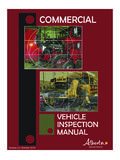

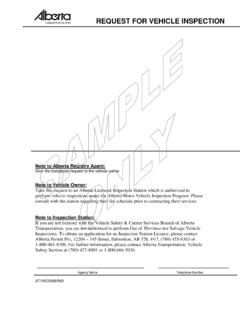
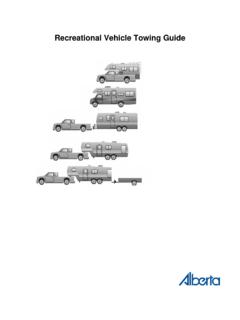
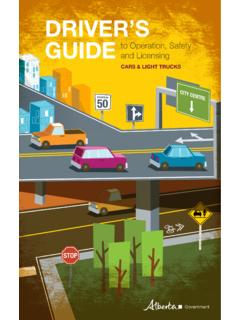
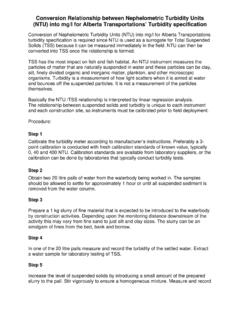
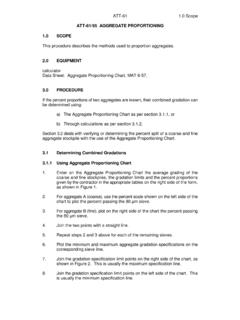
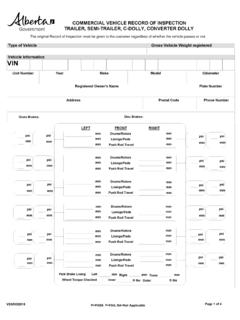
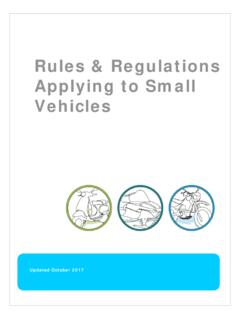



![J1. Definitions [rps/rcp/rp/dp] - Auckland Council](/cache/preview/d/d/2/a/0/8/d/0/thumb-dd2a08d06e371f3ed80cf4e9fa2dd563.jpg)
